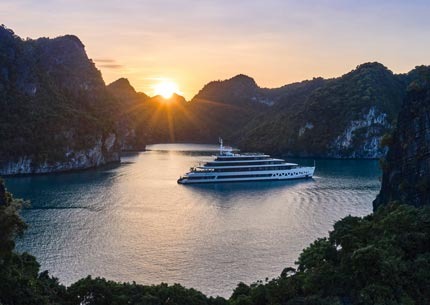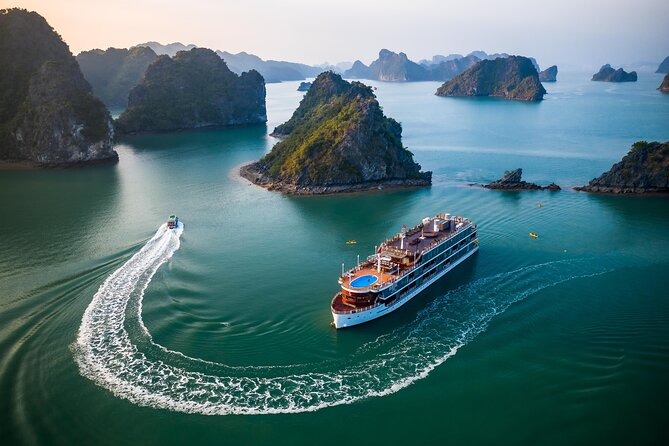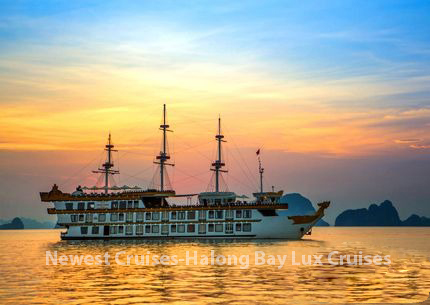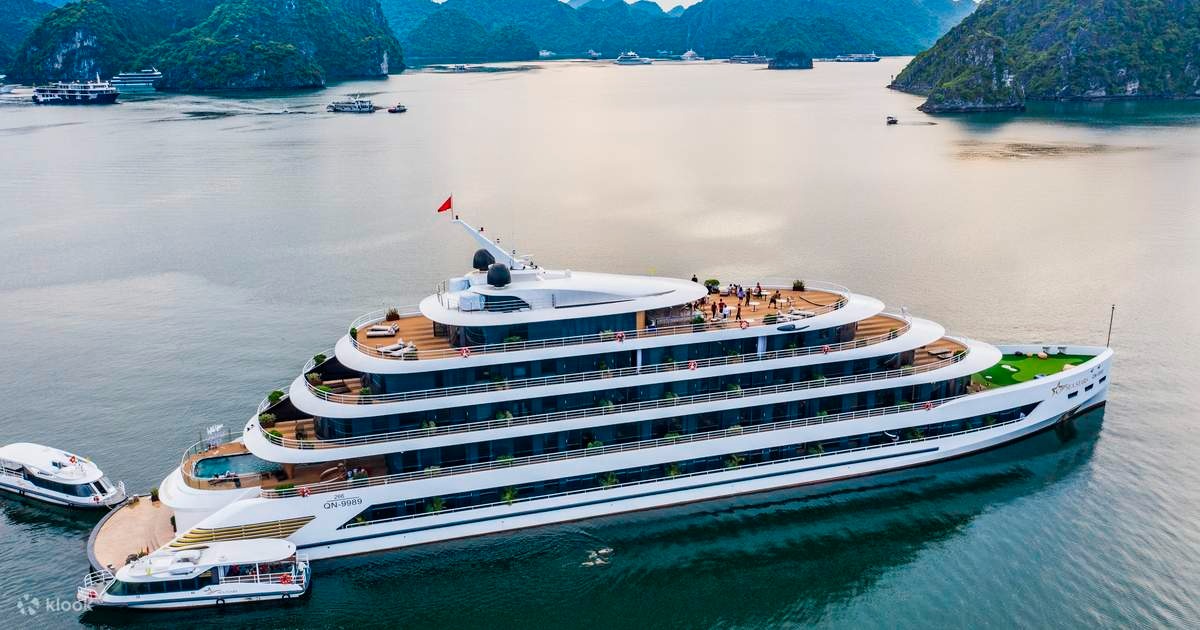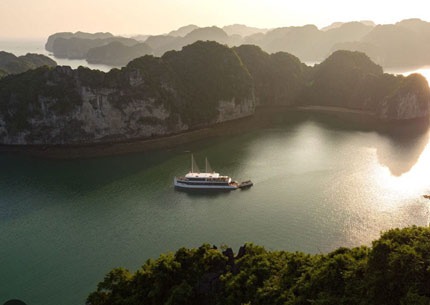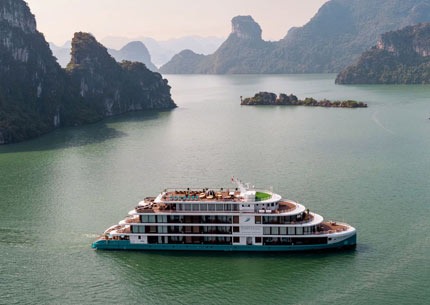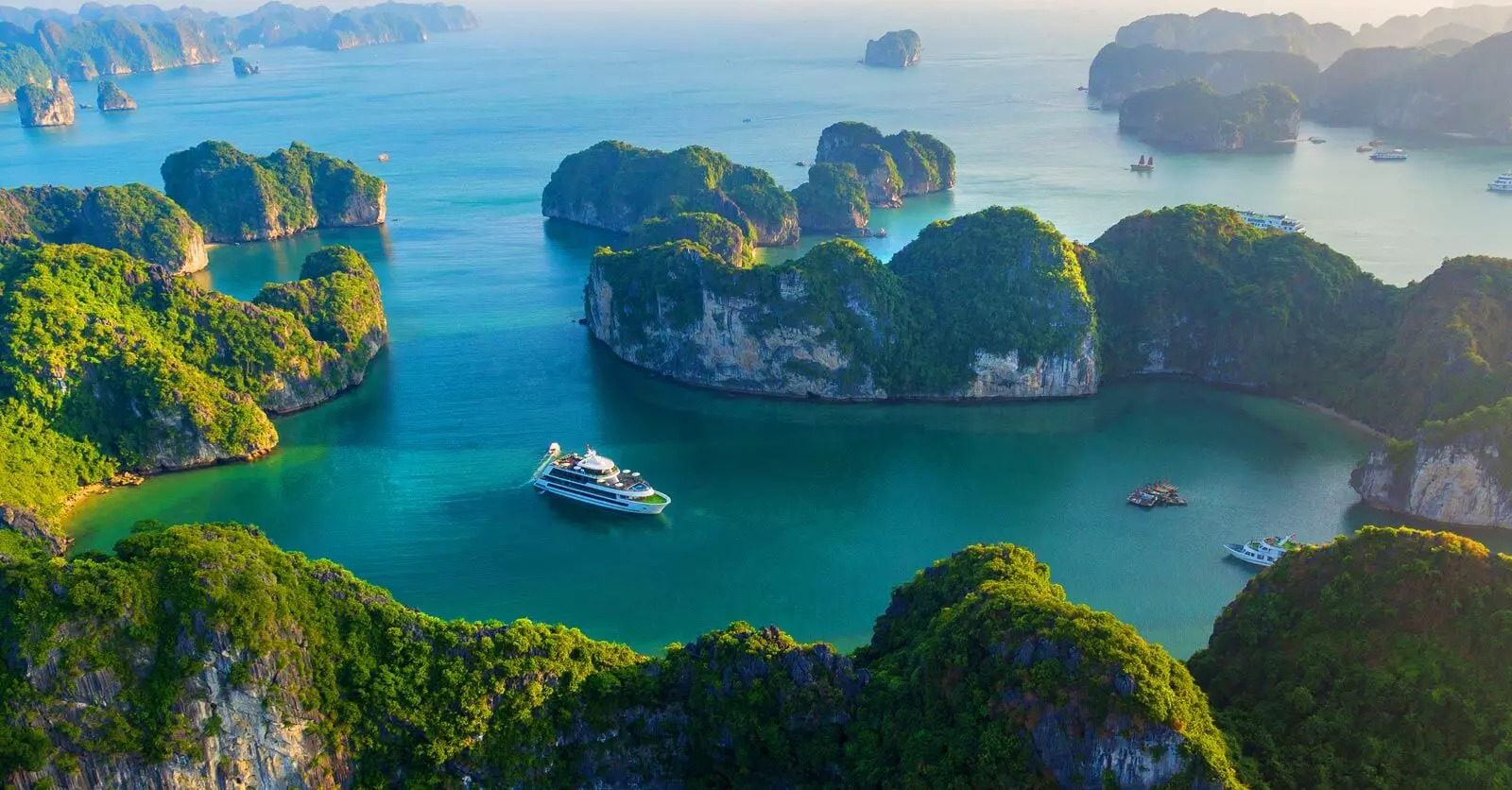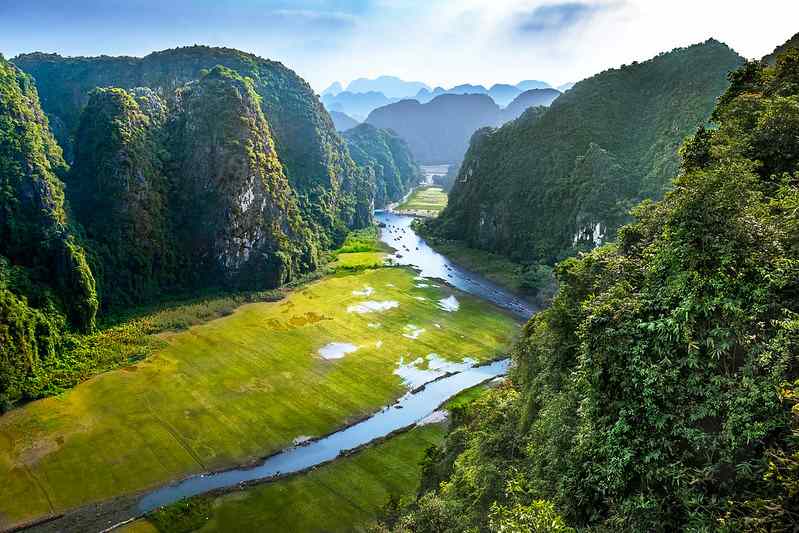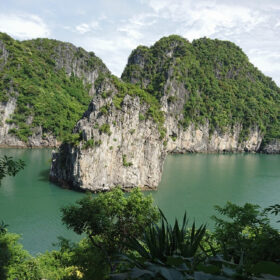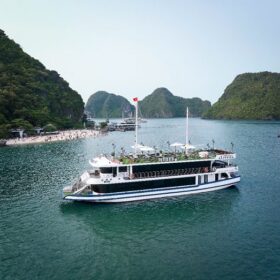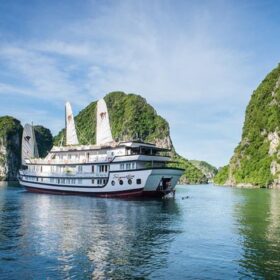Is Bai Tu Long Bay Worth Visit in 2025/26? 11 Compelling Reasons for Nature Lovers
Wondering if Bai Tu Long Bay deserves a spot on your 2025 Vietnam itinerary? This comprehensive guide explores the lesser-known sister of Halong Bay, revealing why savvy travelers are increasingly choosing this pristine paradise for authentic experiences without the crowds. Discover what makes Bai Tu Long Bay a must-visit destination and how to plan your perfect adventure.
What Makes Bai Tu Long Bay a Hidden Gem in Northern Vietnam?
Nestled northeast of the world-famous Halong Bay, Bai Tu Long Bay remains one of Vietnam’s best-preserved natural wonders.
Spanning an impressive 157.8 square kilometers, Bai Tu Long Bay is a majestic seascape. It features over 1,600 limestone islands and islets that rise dramatically from emerald-green waters.
What truly sets Bai Tu Long Bay apart is its remarkable preservation and significantly lower number of tourists. While Ha Long Bay welcomes around 10,000 visitors daily, Bai Tu Long Bay sees only 1,800 to 2,200 travelers. This creates a peaceful and uncrowded atmosphere, increasingly rare in Southeast Asia’s popular destinations.
The bay is protected as part of Bai Tu Long National Park, which has helped preserve its ecological integrity. It is home to rich marine biodiversity and unspoiled beaches.
New environmental protection measures introduced in 2023 and 2024 have further improved the area. Monitoring stations reported a 27% increase in water clarity compared to previous years.
For travelers planning their Vietnam trip in 2025, understanding the key differences between Bai Tu Long Bay and Ha Long Bay is essential. It helps ensure your choice matches your travel style and expectations.
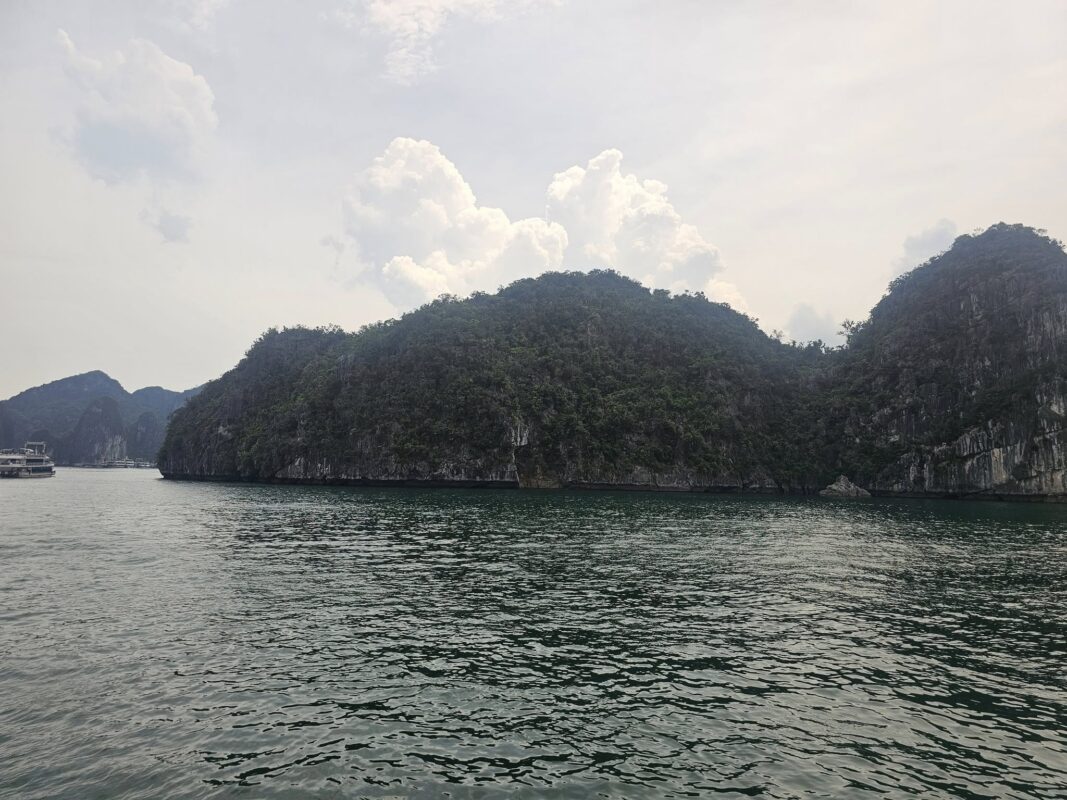
Bai Tu Long Bay vs. Halong Bay: A Detailed Comparison for 2025/26 Travelers
When deciding between these two stunning destinations, several factors come into play:
Visitor Experience and Crowds
Halong Bay’s international fame comes with a price—overcrowding. Recent tourism data from the Vietnam National Administration of Tourism shows Halong Bay hosting approximately 7.8 million visitors in 2024, with projections exceeding 8.5 million for 2025. In contrast, Bai Tu Long Bay received just 420,000 visitors in 2024, creating a dramatically different experience.
The practical impact for visitors is substantial: at popular Halong Bay viewpoints like Ti Top Island, you’ll share the experience with 300-400 fellow tourists during peak hours. At comparable sites in Bai Tu Long Bay, such as Thien Canh Son Cave, you’ll typically encounter fewer than 60 people, allowing for more immersive and peaceful exploration.
Natural Beauty and Preservation
While both bays share the same geological formation of karst landscapes, Bai Tu Long Bay’s stricter environmental regulations have resulted in measurably cleaner waters. Scientific studies conducted by Vietnam’s Institute of Oceanography in 2024 documented water visibility averaging 4.8 meters in Bai Tu Long Bay compared to 3.2 meters in Halong Bay.
The limestone formations themselves remain equally impressive in both locations, with towering pillars reaching heights of 50-100 meters above sea level, creating dramatic seascapes that have captivated travelers for centuries.
Cruise Options and Experiences
Halong Bay offers greater variety in cruise options, from budget day trips (starting at $45) to ultra-luxury experiences ($500+ per night). Bai Tu Long Bay specializes in mid-range to luxury boutique cruises, with fewer but generally higher-quality options.
Halong Bay Lux Cruises stands out for offering specialized itineraries that access the quieter regions of both bays, with their premium vessels accommodating 12-36 passengers compared to the 100+ capacity ships common in Halong Bay.
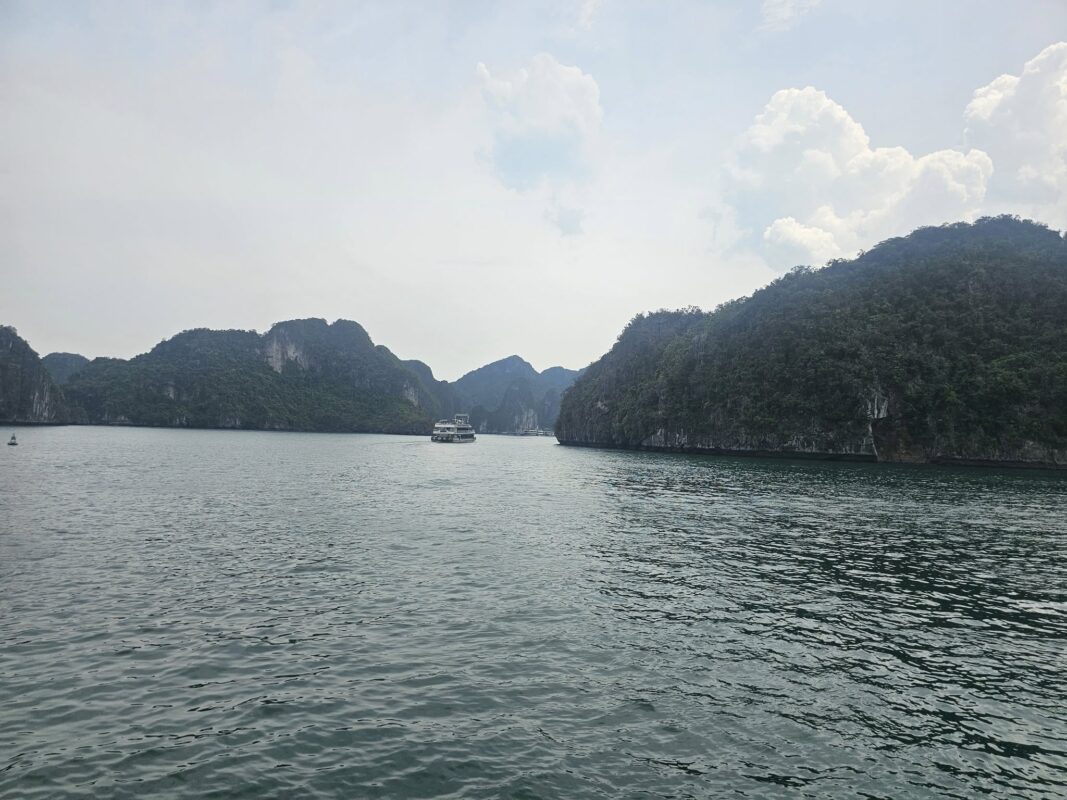
11 Compelling Reasons Why Bai Tu Long Bay Is Worth Visiting in 2025/26
1. Unparalleled Serenity and Natural Immersion
Bai Tu Long Bay offers a rare opportunity to experience Vietnam’s karst seascape in peaceful solitude. Recent visitor surveys conducted by the Vietnam Tourism Association in 2024 revealed that 93% of Bai Tu Long Bay visitors rated “tranquility” as “excellent,” compared to just 41% for Halong Bay.
The practical difference is striking—imagine kayaking through limestone corridors with only the sounds of gentle water lapping against rock and distant bird calls, rather than competing with dozens of other kayakers and the constant drone of boat engines.
2. Exclusive Access to Pristine Beaches
Unlike the heavily trafficked beaches of Halong Bay, Bai Tu Long Bay boasts untouched stretches of sand that remain virtually deserted even during peak season. Ban Chan Beach, with its 400-meter stretch of fine white sand, typically hosts fewer than 30 visitors simultaneously, allowing for genuine relaxation and privacy.
Other notable beaches include Cong Do Beach and Trinh Nu Beach, where crystal-clear waters with visibility up to 5 meters make for exceptional swimming and snorkeling opportunities without the need to share the experience with hundreds of others.
3. Authentic Cultural Encounters at Fishing Villages
The floating fishing villages of Bai Tu Long Bay offer a genuine glimpse into traditional Vietnamese maritime life that has become increasingly commercialized in Halong Bay. Vung Vieng fishing village, home to approximately 50 families (160 residents), welcomes visitors without the staged performances that have become common elsewhere.
Here, travelers can observe authentic pearl cultivation techniques that have been practiced for generations, with opportunities to interact with residents who have lived on these waters for decades. Recent community-based tourism initiatives launched in 2024 now allow visitors to participate in fishing activities and learn traditional net-weaving techniques from village elders.
4. Superior Marine Biodiversity for Snorkeling and Diving
Bai Tu Long Bay’s protected status has preserved its marine ecosystems, resulting in significantly greater biodiversity. Marine biologists from Hanoi University of Science documented 315 fish species in Bai Tu Long Bay compared to 203 in Halong Bay during their 2024 ecological survey.
For snorkelers and divers, this translates to encounters with vibrant coral gardens, schools of parrotfish, groupers, and occasional sightings of blacktip reef sharks in the bay’s deeper channels. The best snorkeling spots include the waters around Cong Do Island and Vung Ha area, where coral coverage reaches 65-70% in some sections.
5. Exclusive Cruise Routes with Hidden Grottoes
Cruise itineraries in Bai Tu Long Bay access caves and grottoes that remain off-limits to most Halong Bay cruises due to conservation regulations. Thien Canh Son Cave, spanning 10,000 square meters with ceiling heights reaching 20 meters, features spectacular stalactite formations illuminated by carefully designed lighting systems that enhance rather than detract from the natural beauty.
Other remarkable geological formations include Vung Dang-Cong Dam area, where a complex of caves and hidden lagoons can only be accessed through narrow passages navigable solely by small boats or kayaks, creating an explorer’s paradise that feels worlds away from standard tourist routes.
6. Superior Culinary Experiences with Local Seafood
The fishing waters of Bai Tu Long Bay are less trafficked by commercial vessels, resulting in more abundant and diverse seafood catches. Cruises operating in this region typically source their seafood directly from local fishermen each morning, ensuring exceptional freshness.
Signature dishes you’ll encounter include Vung Vieng grilled oysters (harvested from the bay’s pearl farms), Van Don blue crab (renowned for its sweet meat), and Bai Tu Long squid pancakes—local specialties prepared using traditional methods that have been preserved for generations.
7. Exceptional Stargazing Opportunities
With minimal light pollution, Bai Tu Long Bay offers spectacular stargazing opportunities that have become increasingly rare in Southeast Asia’s developing coastal regions. Night sky clarity measurements conducted in 2024 revealed an average Bortle scale rating of 3-4 in Bai Tu Long Bay compared to 5-6 in Halong Bay (lower numbers indicate darker skies with greater visibility).
Many luxury cruises now offer dedicated evening stargazing sessions on their top decks, complete with knowledgeable guides who can point out constellations visible in the Northern Hemisphere. During moonless nights between November and March, visitors can often observe the Milky Way with the naked eye—an increasingly rare experience worldwide.
8. Unmatched Photography Opportunities
For photographers, Bai Tu Long Bay offers compositions without the visual distractions of numerous other vessels that have become unavoidable in Halong Bay. The morning mist that frequently envelops the limestone karsts between 5:30-7:00 AM creates ethereal scenes that have made this region increasingly popular with professional landscape photographers.
Drone operators will also appreciate the fewer restrictions in certain zones of Bai Tu Long Bay, though permits are still required and should be arranged in advance through your cruise operator.
9. Sustainable Tourism Practices
Bai Tu Long Bay has embraced sustainable tourism more comprehensively than its famous neighbor. Since 2023, all authorized cruise operators must adhere to strict waste management protocols, including complete prohibition of single-use plastics and mandatory use of biodegradable cleaning products.
By choosing Bai Tu Long Bay, environmentally conscious travelers directly support these conservation efforts. Notable initiatives include the bay-wide coral restoration project that has successfully rehabilitated 7.5 hectares of damaged reef systems since its inception in 2022.
10. Value for Money Despite Premium Positioning
Cruises to Bai Tu Long Bay typically cost 15–20% more than similar options in Ha Long Bay. However, a closer look at the value reveals that Bai Tu Long cruises often offer a better overall experience.
In 2025, the average price for a 2-day/1-night cruise in Bai Tu Long Bay ranges from $180 to $250 per person. In comparison, a similar cruise in Ha Long Bay usually costs between $150 and $210.
Despite the higher price, Bai Tu Long cruises generally include more activities and offer a higher guide-to-guest ratio. On average, the ratio is 1:12 in Bai Tu Long Bay, compared to 1:25 in Ha Long Bay.
Cabin sizes also differ noticeably between the two. Premium cruise vessels in Bai Tu Long Bay offer cabins averaging 22 square meters. In contrast, similar-category cruises in Ha Long Bay provide cabins averaging just 16 square meters.
11. Ideal Weather Patterns for Longer Seasons
Microclimate studies conducted by Vietnam’s Meteorological Service have documented slightly different weather patterns between the two bays. Bai Tu Long Bay experiences approximately 15% fewer foggy days annually than Halong Bay and shows greater protection from strong northeasterly winds during winter months.
This creates a longer optimal travel season, with pleasant conditions extending from early March through late November. For travelers planning 2025 visits, this flexibility allows for avoiding the extreme crowds that concentrate in Halong Bay during the July-August peak season.
Who Is Bai Tu Long Bay Perfect For?
Bai Tu Long Bay particularly appeals to specific traveler profiles:
Nature Enthusiasts and Photographers
Those who prioritize natural beauty and seek optimal conditions for photography will find Bai Tu Long Bay’s unspoiled landscapes and limited boat traffic create ideal conditions for capturing Vietnam’s iconic seascapes without the visual clutter of dozens of other vessels.
Couples and Honeymooners
The private atmosphere and romantic setting make Bai Tu Long Bay ideal for couples. Many cruise operators offer special honeymoon packages with private dining experiences on secluded beaches and intimate sunset viewpoints away from other groups.
Eco-Conscious Travelers
Visitors concerned about environmental impact will appreciate Bai Tu Long Bay’s stronger conservation measures and the opportunity to observe marine ecosystems that remain in healthier condition than those in more heavily trafficked areas.
Experienced Asia Travelers
Those who have previously visited other major attractions in Vietnam or Southeast Asia and now seek more authentic experiences beyond the standard tourist circuit will find Bai Tu Long Bay offers the depth and authenticity they’re searching for.
Planning Your Perfect Bai Tu Long Bay Experience for 2025/26
Best Time to Visit
While Bai Tu Long Bay can be enjoyed year-round, certain periods offer optimal conditions:
- March to May (Spring): Comfortable temperatures (70-80°F/21-27°C), moderate humidity, and lush green landscapes make this shoulder season ideal for visitors seeking balance between good weather and fewer crowds.
- September to November (Fall): Another excellent period with clear skies, pleasant temperatures, and spectacular sunset views. Water visibility reaches its peak during October, making this the prime time for snorkeling and photography.
- December to February: Cooler temperatures (60-70°F/15-21°C) and occasional misty conditions create moody, atmospheric scenes beloved by photographers, though some days may experience limited visibility.
- June to August: The hottest months (85-95°F/29-35°C) with occasional afternoon thunderstorms. While still beautiful, this period sees the highest visitor numbers and humidity levels.
How to Get to Bai Tu Long Bay in 2025
Most journeys to Bai Tu Long Bay begin in Hanoi, located 160 kilometers southwest of the bay:
- From Hanoi to Halong/Bai Tu Long Embarkation Points:
- Private transfer: Most reliable option, taking 2.5-3 hours via the new Hanoi-Halong Expressway (completed in 2023). Costs range from $60-85 each way for a 4-passenger vehicle.
- Shuttle bus: Economical option offered by most cruise companies, typically $25-30 per person each way with pickup from Hanoi’s Old Quarter hotels.
- Helicopter service: Premium option launched in late 2024, reducing travel time to just 45 minutes. Prices start at $450 per person each way, with departures from Hanoi’s Gia Lam Airport.
- Embarkation Points:
- Most Bai Tu Long Bay cruises depart from Hon Gai International Passenger Port or Vingroup Marina, both located in Halong City approximately 15 minutes apart.
Choosing the Right Cruise for Your Preferences
Cruise options for Bai Tu Long Bay generally fall into three categories:
- Premium Boutique Cruises (12-24 passengers):
These intimate vessels offer personalized service, spacious cabins (25-32 square meters), and curated itineraries that access the most secluded areas. Prices range from $280-380 per person for a 2-day/1-night experience, including transfers from Hanoi. Best Halong Bay cruises in this category feature private balconies, high-quality dining experiences, and exclusive excursions. - Mid-Range Cruises (25-40 passengers):
Offering good value with comfortable accommodations (18-22 square meters) and comprehensive itineraries, these vessels balance quality with affordability. Expect to pay $180-260 per person for a 2-day/1-night package. - Traditional Wooden Junks (8-16 passengers):
These characterful vessels offer an authentic aesthetic with modern comforts. While cabins tend to be smaller (14-18 square meters), the traditional design and intimate atmosphere create a unique experience. Prices typically range from $220-320 per person.
For families or groups seeking complete privacy, private charter options are available starting from $1,200 per day for smaller vessels accommodating up to 8 passengers.
Essential Packing Tips for Bai Tu Long Bay
Beyond standard travel items, consider these specific recommendations for Bai Tu Long Bay:
- Reef-safe sunscreen: Standard sunscreens can damage coral ecosystems. Look for mineral-based options containing zinc oxide or titanium dioxide rather than oxybenzone or octinoxate.
- Moisture-wicking clothing: The bay’s humidity levels average 75-85% year-round. Quick-drying fabrics make the experience more comfortable, especially when transitioning between water activities and onboard relaxation.
- Non-marking water shoes: These prove invaluable for exploring limestone caves with wet, sometimes slippery surfaces, and for protecting feet when kayaking or visiting fishing villages.
- Insect repellent: While not a major issue on the water, mosquitoes can be present during shore excursions, particularly during dawn and dusk hours.
- Binoculars: Enhances wildlife spotting opportunities, especially for observing the 187 bird species documented in Bai Tu Long National Park.
Final Verdict: Is Bai Tu Long Bay Worth Visiting in 2025/26?
Absolutely yes—Bai Tu Long Bay offers a rare blend of natural beauty, cultural authenticity, and peaceful exploration. This combination is becoming increasingly difficult to find in today’s heavily touristed world.
While Ha Long Bay remains an iconic destination, Bai Tu Long Bay delivers a more immersive and rewarding experience. It appeals especially to travelers who are willing to look beyond the most famous names.
There are measurable differences between the two bays in terms of crowd levels, water clarity, and ecosystem health. These factors contribute to a noticeably superior experience in Bai Tu Long Bay.
This higher quality justifies both the slight premium in price and the small amount of extra planning involved.
As Vietnam continues to expand its tourism infrastructure, untouched destinations like Bai Tu Long Bay will become even more rare—and more valuable.
For travelers in 2025 seeking the ideal mix of accessibility and authenticity, Bai Tu Long Bay stands out. It is not just a worthy alternative to Ha Long Bay but arguably the better choice.
Here, visitors can still witness Vietnam’s limestone seascape in its most pristine and unspoiled form
Ready to experience the tranquil beauty of Bai Tu Long Bay? Halong Bay Lux Cruises offers expertly curated journeys that showcase the best of this hidden gem while ensuring comfort, sustainability, and unforgettable experiences for discerning travelers.
- Hotline | WhatsApp: +84.978.358.422
- Phone | WhatsApp: +84.962.261.687
- Email: halongbayluxcruises@gmail.com
- vietnammarveltravel@gmail.com

